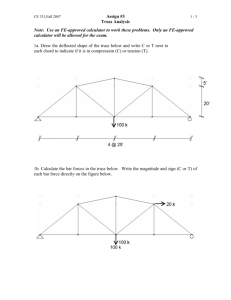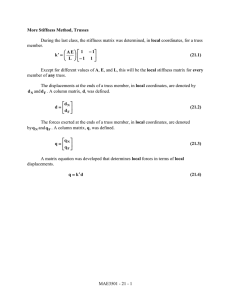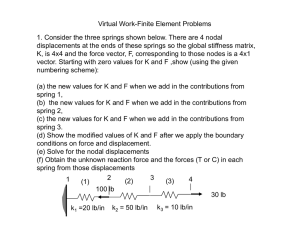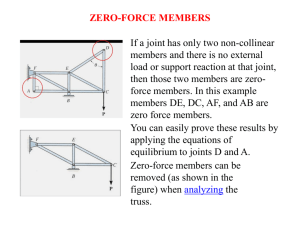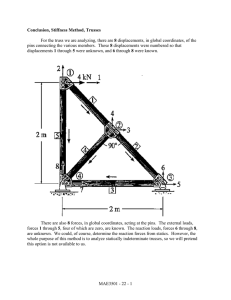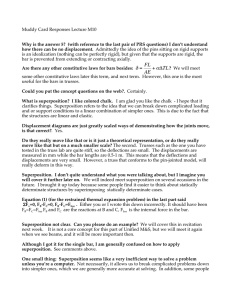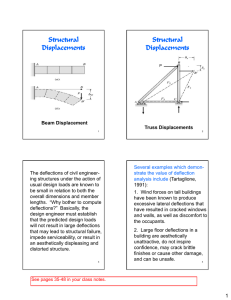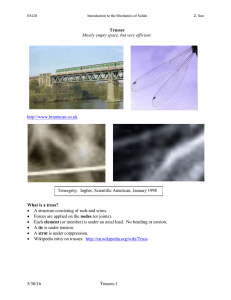UNIT III FINITE ELEMENT METHOD
advertisement
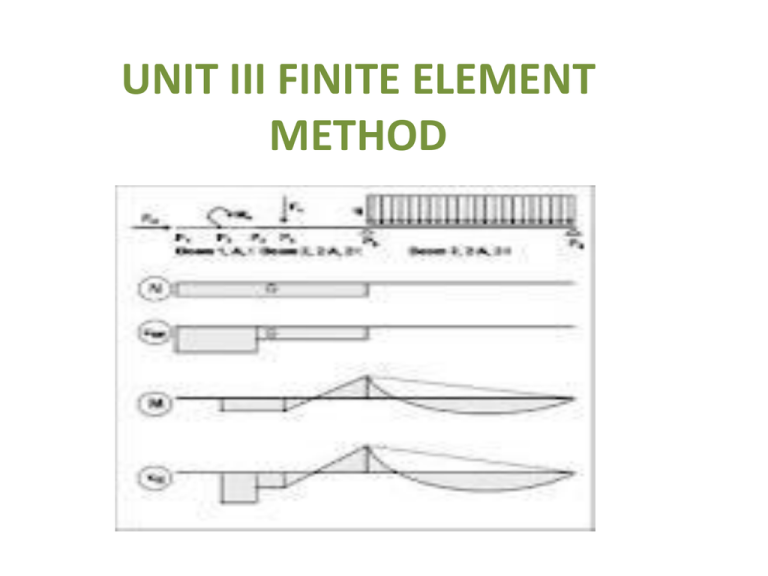
UNIT III FINITE ELEMENT METHOD INTRODUCTION • General Methods of the Finite Element Analysis • 1. Force Method – Internal forces are considered as the unknowns of the problem. • 2. Displacement or stiffness method – Displacements of the nodes are considered • as the unknowns of the problem Discretisation of a structure • In order to represent a half-hole model in a wave digital modelling context, a decomposition of the instantaneous variables ( and ) into wave variables is required. Taking a three-port modelling approach (as described in, and applying to the network in the modelling structure depicted in results. Because the main bore is modelled as a digital waveguide, both and must equal the main bore characteristic impedance . The scattering equations of the three-port junction that models the wave interaction at the intersection between the main bore and the tonehole are: Displacement functions • Displacement function for the CST element .1.Select the element type which infers the displacement function is specified 2. Discretize the component 3. Define a constitutive relationship (stress – strain relationship) 4. Assemble the element stiffness matrix 5. Assemble the component, or global stiffness matrix 6. Solve Solve the system of equations for unknonwn nodal displacements the system of equations for unknonwn nodal displacements 7. Solve for Element Strains and Stresses TRUSS ELEMENTS It is made up of several bars, riveted or welded together. The following assumptions are made while finding the forces in a truss, (a) All members are pin joints, (b) The truss is loaded only at the joints, (c) The self – weight of the members is neglected unless stated • Stiffness Matrix [K] for a truss element Beam element • A beam element is defined as a long, slender member that is subjected to vertical loads and moments, which produce vertical displacements and rotations. The degrees of freedom for a beam element are a vertical displacement and a rotation at each node, as opposed to only an horizontal displacement at each node for a truss element. Plane stress analysis • which includes problems such as plates with holes, fillets, or other changes in geometry that are loaded in their plane resulting in local stress concentrations. Plane strain analysis • which includes problems such as a long g g underground box culvert subjected to a • uniform load acting constantly over its length or a long • cylindrical control rod subjected to a load that remains constant over the rod length TRUSS STRUCTURES 80 kN 60 kN 80 kN C 60 kN D A C D B A 1 2 B Primary structure Truss Structures (a) Remove the redundant member (say AB) and make the structure • a primary determinate structure • The condition for stability and indeterminacy is: r+m>=<2j, • Since, m = 6, r = 3, j = 4, (r + m =) 3 + 6 > (2j =) 2*4 or 9 > 8 i = 1 b)Find deformation ABO along AB: ABO = (F0uABL)/AE F0 = Force in member of the primary structure due to applied load uAB= Forces in members due to unit force applied along AB Truss Structures (c) Determine deformation along AB due to unit load applied along AB: d) Apply compatibility condition along AB: ABO+fAB,ABFAB=0 d) Hence determine FAB (e) Determine the individual member forces in a particular member CE by FCE = FCE0 + uCE FAB where FCE0 = force in CE due to applied loads on primary structure (=F0), and uCE = force in CE due to unit force applied along AB (= uAB)




